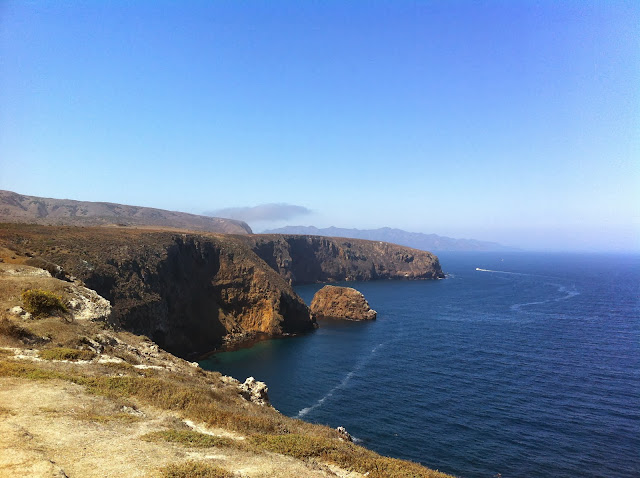The scale and beauty of Yosemite simply can not be captured on film. This is one of the first views you get of the valley driving north into the park from Fresno, CA on Wawona Rd. (click to enlarge) The valley (where most tourists stay) is in the right hand side of the panorama before you see the road. If you want to see a map so you know what locations I'm talking about throughout this post, click here.
Another picture heading in.
Deer are everywhere in the park and almost always draw a crowd of curious Europeans and photographers (such as myself). Picture and video taken in Yosemite village in the valley.
The first night in we had trouble finding a campsite in Yosemite valley so we headed up a mountain to hike at one of the many campsites in the park. We chose Hodgen Meadow because it seemed to be the closest to the valley. Here's a view of the moon rising from our campsite. While camping in Yosemite, you have to watch out for bears. Only use the bear save metal containers provided at each site, they can get into cars. They also like the smell of any bathroom items that may be scented like toothpaste so be sure and lock those up too!
The next morning dad and I went for a nice hike on the mist trail out of the valley. About 1,872 ft elevation gain and about 5.7 miles.
Here is a map of the hiking trail we followed.
This is a video of the topography of the whole valley which includes the trail we hiked.
At the beginning of the hike, the trail is deceptively nice and paved. You can see other openings in the mountains.
The first falls we reached was Vernal Fall 5044 ft above sea level.
Around this falls I saw a little squirrel who was remarkably comfortable around humans. He probably gets lots of food from the hikers.
The top of the fall.
This is the stream that produces the falls.
As we proceed we get our first glimpse of Nevada Fall.
Here is a view of the fall from the other side later on in our hike.
The stream that produces the water fall.
View from the top of our hike at 5,044 ft above sea level.
In the center of this picture is half dome. The summit is 8,836 ft above sea level.
Proof that I was there =P
We saw this little set up on the way out. I thought it was pretty cool since it just sits in the back of his truck.
Behind me is the valley on our way out on Tioga Rd at Olmsted Point. I'm wearing a jacket in this picture while in the other one I'm not wearing a shirt because it can get very windy out of the valley.
Same view without annoying people blocking it.
Here is a picture of Tenaya Lake. Its right along Tioga Rd. We were actually lucky to get to drive on this road as it had been closed due to fires that had been raging since May 21!
After driving about 30-40 mins you reach Tuolumne Meadows. We didn't stop for very long but there is a place to eat, camp and get gas.
Outside the park is Tioga Pass and it affords equally stunning views. Originally constructed in 1902-1910 and cost $63,00. It is considered by the American Society of Civil Engineers to be a landmark that displays the skill of the state engineers who designed it. It had a maximum grade of 7% although I'm not sure if that is true today or not since it was improved and re-built from 1965-1970.
Panoramic shot, you can see the path the road follows on the left side if you look closely.



































































